This application note will help the designer of high-performance multichannel data acquisition systems (DASs) to optimize the interface between industrial sensors and a high-performance ADC. The example used is a power-grid monitoring system. The article explains how to select the proper components to achieve optimal system performance with the high-resolution MAX11046, MAX1320, MAX1308 multichannel ADCs. Schematics are shown.
Consider an advanced three-phase power-line monitoring/measurement system shown in Figure 1. These industrial applications require accurate simultaneous, multichannel measurement over a wide dynamic range up to 90dB (depending on the application) at a typical sample rate up to 64ksps. To optimize system precision, signals from the sensors (CT and PT transformers in Figure 1) should be properly conditioned to meet the ADCs' input ranges and ensure that the DAS's characteristics will enable measurements that comply with international standards.
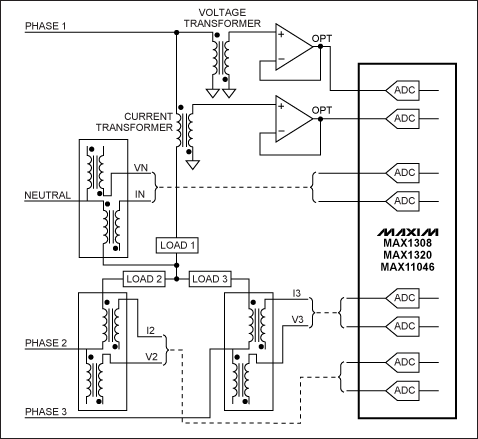
Figure 1. Typical power-grid monitoring application for a MAX11046-, MAX1320-, MAX1308-based DAS.
Table 1. Important typical characteristics of high-performance multichannel SAR ADCs
Typically the outputs of the CT and PT (sensor) transformers are ±10VP-P or ±5VP-P. As Table 1 shows, the MAX130x and MAX132x ADCs cover these ranges well. The MAX11046's input range covers only one of the transformers' popular input ranges, ±5V.
The MAX130x and MAX132x ADCs have relatively low impedance-input circuitry. Consequently, for a power-grid monitoring system, these devices require an input buffer and lowpass filter (Figure 2) to achieve 12-bit to 14-bit accuracy.
Note: For more detailed information regarding the design of high-order, lowpass continuous-time filters, see application note 733, "A Filter Primer," and note 738, "Minimizing Component-Variation Sensitivity in Single Op Amp Filters." Maxim offers industrial precision operational amplifiers like the MAX9943/MAX9944 or MAX4493/MAX4494/MAX4495 which fit these applications well.
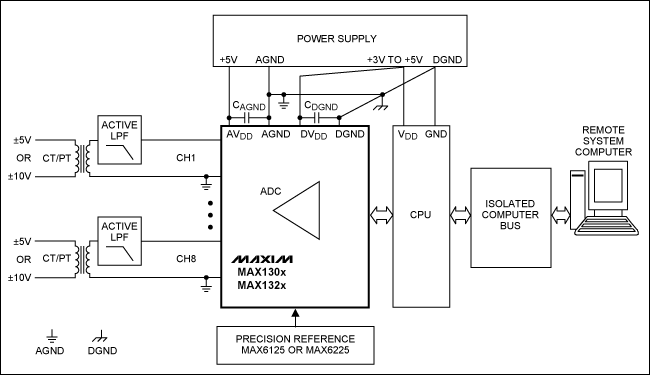
Figure 2. Board-level block diagram of a typical power-line monitoring application using the MAX130x and MAX132x families. Drawing shows that active lowpass filters are required to interface to CT and PT transformers.
An active-input buffer/lowpass filter is optional for MAX11046. The very high input-impedance values of the MAX11046 devices allow direct connection to specific sensors (see Table 1). The CT and PT measurement transformers, for example, represent relatively low-impedance sensors (i.e., effective impedance, RTRANS, is in the order of 10Ω to 100Ω) and, therefore, could be connected directly to the MAX11046 inputs using a simple RC analog front-end (AFE). If the 50Hz/60Hz signal in the measurement bandwidth has low levels of aliasing interferences, then a filter created by an input RC circuit can be sufficient.
A simple and cost-effective approach to accommodate ±5V or ±10V ranges for the MAX11046 is shown in Figure 3.
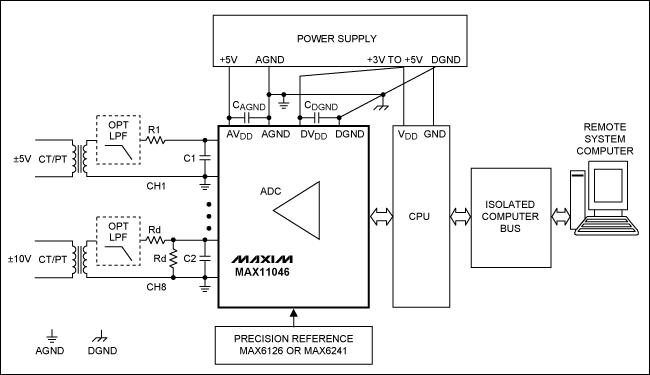
Figure 3. Board-level block diagram of a typical power-line monitoring application using the MAX11046. Drawing shows a ±5V transformer interface for channel 1 and ±10V interface for channel 8.
Consider now the input circuit shown in Figure 3. Special attention should be made when selecting the values for R1, C1, Rd and C2. The 1:1 ratio resistive divider (Rd1 = Rd2 = Rd) represents a load for the PT and CT transformers, which will cause gain error. This gain error can be calculated for Figure 3 using Equation 1:
Rd is the divider impedance.
RTRANS is the transfer impedance.
The effect of the resistance values on the gain error are shown in Table 2.
Table 2. Effect of the resistance values on the gain error
Data from Table 2 demonstrate that to maintain low gain error, the designer must use precision resistors. The resistors should be metal-film type, have the tolerances defined in Table 2, and offer a low temperature coefficient (tempco). It is preferable for the designer to acquire components from reputable sources like Tyco or Vishay.
An elegant resistor-divider solution can be implemented using the MAX5491 which consists of two accurately matched resistors in a single package.
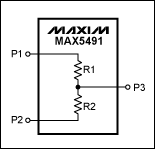
Figure 4. Typical operating circuit for the MAX5491 precision-matched resistor-divider.
The MAX5491 includes an extremely low resistance-ratio temperature drift of 2ppm/°C over -40°C to +85°C; it has an end-to-end resistance of 30k, which gives and maintains 0.17% gain error (see Table 2).
The MAX11046 evaluation (EV) kit offers a fully functional 8-channel DAS to help design engineers expedite development with practical verification of the schematic solution suggested in Figure 3.
Measurements were performed on the MAX11046EVKIT-based development system shown in Figure 5.
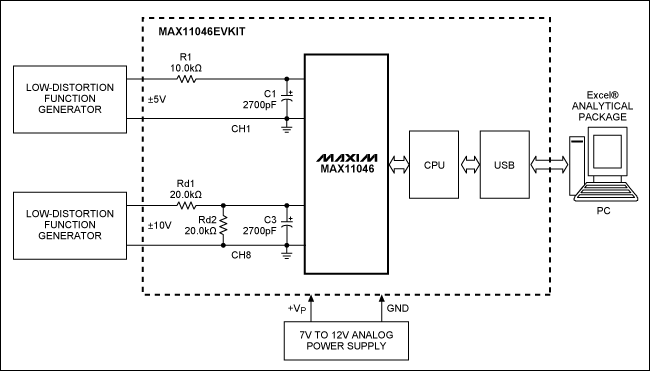
Figure 5. Block diagram of a MAX11046 EVKIT-based development system shows that precision measurement can be accomplished using a minimal number of additional components. Measurement results are transferred though the USB port to a PC and are converted to Excel? files for further processing.
In Figure 5 the ±5V signals from a function generator are connected to the MAX11046's channel 1 input by R1 and C1. The values of R1 and C1 must meet the ADC's acquisition time requirements and can be derived from Equation 2:
R1MAX is the maximum source impedance.
FSAMPLE is the sample rate.
TCONV is the ADC's conversion time (e.g., 3μs for the MAX11046).
K is the number of RC time constants needed to meet the ADC's required resolution (i.e., 12 time constants for a 16-bit ADC).
CSAMPLE is the internal sample capacitor (e.g., around 20pF for the MAX11046).
From Equation 2, R1MAX is around 12.1kΩ at 2.5ksps and C1 = 2700pF. Therefore, the selected value of R1 = 10.0kΩ is within the design limits. The value of C1 = 2700pF is more than 100 times larger than CSAMPLE and, therefore, supplies more than sufficient charges to the internal sampling capacitor.
The ±10V signals from the function generator in Figure 5 are connected to the MAX11046's input channel 8 by the Rd divider and C2. Rd = 20.0kΩ and, therefore, according Table 2 should provide gain error around 0.12%. This performance meets the standard 0.2% accuracy measurement mandated by the popular European Union (EU) standard IEC 62053 for precision energy-metering equipment.
The EV kit settings used for the above measurements are shown Figure 6.
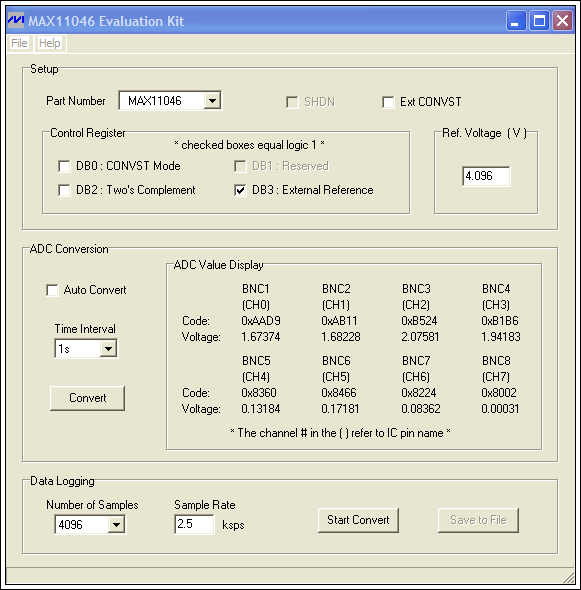
Figure 6. The MAX11046EVKIT's GUI allows the designer to conveniently set various measurement conditions, in this case 2.5ksps and 4096 samples.
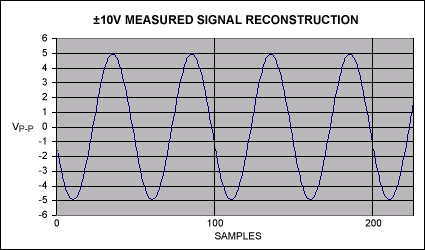
Figure 7. Simulated with Excel software, these oscilloscope images show the reconstructed conditioned (divided and filtered) ±10V input signal from a function generator (see schematic in Figure 5).
Results of the precision measurement using the settings required for the circuit in Figure 5 are shown in Table 3.
Table 3. Measured parameters from data gathered for the Figure 5 circuit
From Table 3 the measured RMS (meas) represents the measured and processed results of the generator's input RMS (gen). Results confirm that the measured RMS error of the conditioned circuits is approximately 0.09%, which comfortably meets the EU standard IEC 62053 precision requirement of 0.2% for energy-metering equipment.
For additional reading, see application note 4595, "Reduce system cost for advanced powerline monitoring by leveraging high-performance, simultaneous-sampling ADCs."
Introduction
Many advanced industrial applications use high-performance multichannel data acquisition systems (DASs) to manage real-time information from precision industrial sensors. These complex systems require the use of high-performance, simultaneous-sampling, multichannel ADCs like the MAX11046, MAX1320, and MAX1308.Consider an advanced three-phase power-line monitoring/measurement system shown in Figure 1. These industrial applications require accurate simultaneous, multichannel measurement over a wide dynamic range up to 90dB (depending on the application) at a typical sample rate up to 64ksps. To optimize system precision, signals from the sensors (CT and PT transformers in Figure 1) should be properly conditioned to meet the ADCs' input ranges and ensure that the DAS's characteristics will enable measurements that comply with international standards.

Figure 1. Typical power-grid monitoring application for a MAX11046-, MAX1320-, MAX1308-based DAS.
Role of the SAR ADCs in an industrial DAS
As Figure 1 illustrates, the MAX11046, MAX1320, or MAX1308 simultaneously measure the three phases and a neutral (voltages and currents). Each of these ADCs is based on a successive-approximation-register (SAR) architecture. As the name implies, a SAR ADC implements a binary search algorithm (successive approximation). The MAX11046, MAX1320, and MAX1308 offer both a fast conversion time (up to 250ksps per channel for up to 8 channels) that allows instantaneous measurements, and flexible input interfaces of ±10V, ±5V, or 0 to 5V. Some important typical characteristics of Maxim's SAR ADC families are shown in Table 1. For more details, refer to the respective data sheets.Table 1. Important typical characteristics of high-performance multichannel SAR ADCs
| Part | Channels | Input Range (V) | Resolution (Bits) | Speed (ksps, max) | SINAD (dB) | Input Impedance |
| MAX1304 | ? | 0 to 5 | ? | ? | ? | ? |
| MAX1308 | ? | ±5 | 12 | 456 | 71 | ? |
| MAX1312 | ? | ±10 | ? | ? | ? | Medium, (approx 2kΩ) |
| MAX1316 | 8 | 0 to 5 | ? | ? | ? | |
| MAX1320 | ? | ±5 | 14 | 250 | 76.5 | ? |
| MAX1324 | ? | ±10 | ? | ? | ? | ? |
| MAX11046 | ? | ±5 | 16 | 250 | 91.4 | Very high (in 10s of MΩ); mostly capacitive |
Typically the outputs of the CT and PT (sensor) transformers are ±10VP-P or ±5VP-P. As Table 1 shows, the MAX130x and MAX132x ADCs cover these ranges well. The MAX11046's input range covers only one of the transformers' popular input ranges, ±5V.
The MAX130x and MAX132x ADCs have relatively low impedance-input circuitry. Consequently, for a power-grid monitoring system, these devices require an input buffer and lowpass filter (Figure 2) to achieve 12-bit to 14-bit accuracy.
Note: For more detailed information regarding the design of high-order, lowpass continuous-time filters, see application note 733, "A Filter Primer," and note 738, "Minimizing Component-Variation Sensitivity in Single Op Amp Filters." Maxim offers industrial precision operational amplifiers like the MAX9943/MAX9944 or MAX4493/MAX4494/MAX4495 which fit these applications well.

Figure 2. Board-level block diagram of a typical power-line monitoring application using the MAX130x and MAX132x families. Drawing shows that active lowpass filters are required to interface to CT and PT transformers.
An active-input buffer/lowpass filter is optional for MAX11046. The very high input-impedance values of the MAX11046 devices allow direct connection to specific sensors (see Table 1). The CT and PT measurement transformers, for example, represent relatively low-impedance sensors (i.e., effective impedance, RTRANS, is in the order of 10Ω to 100Ω) and, therefore, could be connected directly to the MAX11046 inputs using a simple RC analog front-end (AFE). If the 50Hz/60Hz signal in the measurement bandwidth has low levels of aliasing interferences, then a filter created by an input RC circuit can be sufficient.
A simple and cost-effective approach to accommodate ±5V or ±10V ranges for the MAX11046 is shown in Figure 3.

Figure 3. Board-level block diagram of a typical power-line monitoring application using the MAX11046. Drawing shows a ±5V transformer interface for channel 1 and ±10V interface for channel 8.
Consider now the input circuit shown in Figure 3. Special attention should be made when selecting the values for R1, C1, Rd and C2. The 1:1 ratio resistive divider (Rd1 = Rd2 = Rd) represents a load for the PT and CT transformers, which will cause gain error. This gain error can be calculated for Figure 3 using Equation 1:
Where:
Gain error % = (1 - 2 × Rd/(2 × Rd + RTRANS)) × 100 (Eq. 1)
Rd is the divider impedance.
RTRANS is the transfer impedance.
The effect of the resistance values on the gain error are shown in Table 2.
Table 2. Effect of the resistance values on the gain error
| RTRANS (Ω) | Rd (Ω) | Gain Error (%) | Resistor Tolerance (%) |
| 50 | 20000 | 0.12 | 0.05 |
| 50 | 15000 | 0.17 | 0.05 |
| 50 | 10000 | 0.25 | 0.10 |
| 50 | 6980 | 0.36 | 0.10 |
| 50 | 4990 | 0.50 | 0.10 |
Data from Table 2 demonstrate that to maintain low gain error, the designer must use precision resistors. The resistors should be metal-film type, have the tolerances defined in Table 2, and offer a low temperature coefficient (tempco). It is preferable for the designer to acquire components from reputable sources like Tyco or Vishay.
An elegant resistor-divider solution can be implemented using the MAX5491 which consists of two accurately matched resistors in a single package.

Figure 4. Typical operating circuit for the MAX5491 precision-matched resistor-divider.
The MAX5491 includes an extremely low resistance-ratio temperature drift of 2ppm/°C over -40°C to +85°C; it has an end-to-end resistance of 30k, which gives and maintains 0.17% gain error (see Table 2).
The MAX11046 evaluation (EV) kit offers a fully functional 8-channel DAS to help design engineers expedite development with practical verification of the schematic solution suggested in Figure 3.
Measurements were performed on the MAX11046EVKIT-based development system shown in Figure 5.

Figure 5. Block diagram of a MAX11046 EVKIT-based development system shows that precision measurement can be accomplished using a minimal number of additional components. Measurement results are transferred though the USB port to a PC and are converted to Excel? files for further processing.
In Figure 5 the ±5V signals from a function generator are connected to the MAX11046's channel 1 input by R1 and C1. The values of R1 and C1 must meet the ADC's acquisition time requirements and can be derived from Equation 2:
Where:
R1MAX = (1/FSAMPLE - TCONV)/k(C1 + CSAMPLE) (Eq. 2)
R1MAX is the maximum source impedance.
FSAMPLE is the sample rate.
TCONV is the ADC's conversion time (e.g., 3μs for the MAX11046).
K is the number of RC time constants needed to meet the ADC's required resolution (i.e., 12 time constants for a 16-bit ADC).
CSAMPLE is the internal sample capacitor (e.g., around 20pF for the MAX11046).
From Equation 2, R1MAX is around 12.1kΩ at 2.5ksps and C1 = 2700pF. Therefore, the selected value of R1 = 10.0kΩ is within the design limits. The value of C1 = 2700pF is more than 100 times larger than CSAMPLE and, therefore, supplies more than sufficient charges to the internal sampling capacitor.
The ±10V signals from the function generator in Figure 5 are connected to the MAX11046's input channel 8 by the Rd divider and C2. Rd = 20.0kΩ and, therefore, according Table 2 should provide gain error around 0.12%. This performance meets the standard 0.2% accuracy measurement mandated by the popular European Union (EU) standard IEC 62053 for precision energy-metering equipment.
The EV kit settings used for the above measurements are shown Figure 6.

Figure 6. The MAX11046EVKIT's GUI allows the designer to conveniently set various measurement conditions, in this case 2.5ksps and 4096 samples.

Figure 7. Simulated with Excel software, these oscilloscope images show the reconstructed conditioned (divided and filtered) ±10V input signal from a function generator (see schematic in Figure 5).
Results of the precision measurement using the settings required for the circuit in Figure 5 are shown in Table 3.
Table 3. Measured parameters from data gathered for the Figure 5 circuit
| Generator Signal (VP-P) | Measured Parameters from Processed Excel Files | |||
| RMS (gen, VRMS) | RMS (meas, VRMS) | RMS Error (%) | Req (%) | |
| Channel 1, ±4.950 | 3.50018 | 3.49704 | 0.08961 | 0.20 |
| Channel 8, ±9.900 | 7.00036 | 3.49695 | 0.09227 | 0.20 |
From Table 3 the measured RMS (meas) represents the measured and processed results of the generator's input RMS (gen). Results confirm that the measured RMS error of the conditioned circuits is approximately 0.09%, which comfortably meets the EU standard IEC 62053 precision requirement of 0.2% for energy-metering equipment.
Conclusion
High-performance multichannel, simultaneous-sampling ADCs like the MAX130x, MAX132x, and MAX11046 devices are especially useful in new DAS industrial applications. With properly selected signal conditioning, an interface circuit can exceed the EU standard requirements and advanced specifications for "smart" power-grid monitoring systems.For additional reading, see application note 4595, "Reduce system cost for advanced powerline monitoring by leveraging high-performance, simultaneous-sampling ADCs."
 電子發燒友App
電子發燒友App












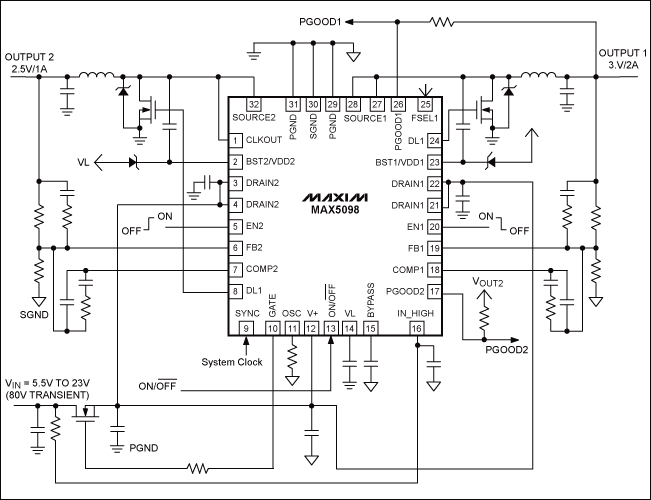
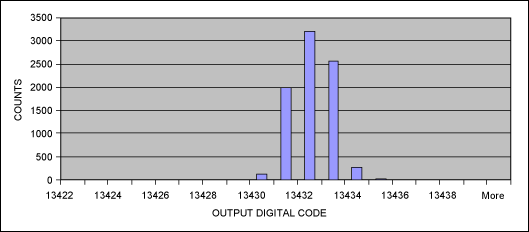
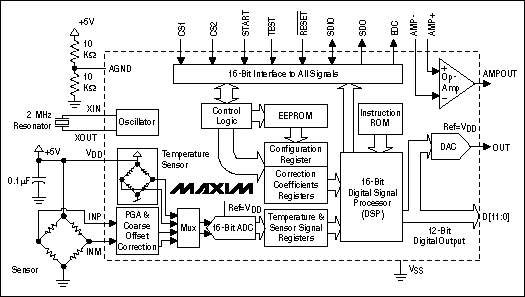
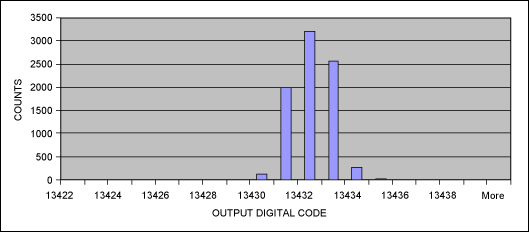
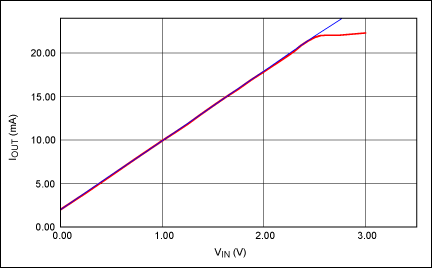
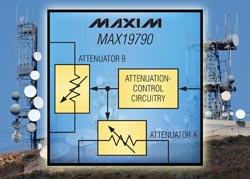











評論